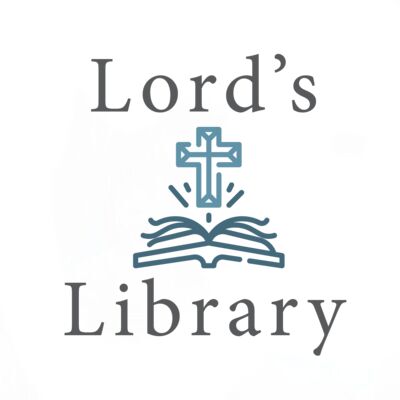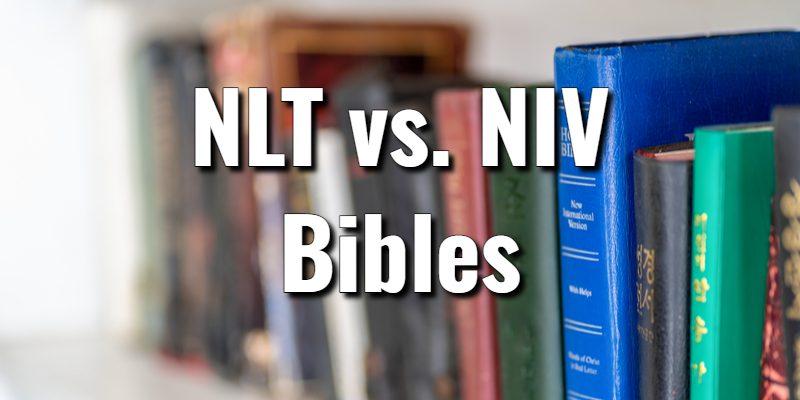This is part of Lord’s Library’s Bible Comparison Series. Our editors explore the NLT vs. NIV Bibles so you can understand the major differences between each translation.
 When looking for a new Bible for yourself or as a gift, comparing the different Bible versions is an ideal first step. It’s also important that one considers the various Christian Church denominations when Bible shopping so the reader can be comfortable with their translation’s version of English. Some churches mandate a precise edition as well, while others may be curious about which version of the manuscript their favorite Bible translation comes from.
When looking for a new Bible for yourself or as a gift, comparing the different Bible versions is an ideal first step. It’s also important that one considers the various Christian Church denominations when Bible shopping so the reader can be comfortable with their translation’s version of English. Some churches mandate a precise edition as well, while others may be curious about which version of the manuscript their favorite Bible translation comes from.
.If you’ve ever asked the question “What’s the difference between the NLT vs. NIV Bibles?” you’ve come to the right place. It’s in that spirit that our editors compiled this short resource by first offering a simple description of each Bible version, and then a comparison that highlights key contrasts. For each of the two Bible versions compared, Lord’s Library editors included links to our directories of the best editions, as well as the most popular products.
NLT vs. NIV Bibles
What is the NLT (New Living Translation)?
The New Living Translation Bible was created by Tyndale House Publishers in an effort to create a real Bible translation, not a personal paraphrase, that honored the legacy of the Living Bible. First published complete in 1996, The New Living Bible was translated by leading scholars with the use of the earliest and best manuscript evidence available at the time. In light of this, it has proven to be one of the most reliable and popular meaning-for-meaning translations on the market. Still, not being a literal translation means that this Bible is better suited for devotional use rather than serious Bible study.
What is the NIV (New International Version)?
The New International Version was created to meet the need for a Bible in modern English using the earliest, highest quality manuscripts available. The translators also aimed to create a reading of God’s Word that would be accessible to a wide audience in terms of language. The NIV Bible was translated by a team of 15 biblical scholars representing many different evangelical denominations.
The New International Version was first published complete in 1978 by Biblica, formerly known as the International Bible Society. Later revisions in 1984 and 2011 were created in light of new manuscript discoveries. It has become one of the best-selling modern translations on the market today. Modern criticisms include those who state that the NIV has significantly altered, or downright omitted, key passages that are present in the King James Version and other, older, literal translations.
NLT vs. NIV Bibles; What’s the Difference?
The goal of any Bible translation is to convey the meaning of the ancient Hebrew and Greek texts as accurately as possible to the modern reader. The New Living Translation is based on the most recent scholarship in the theory of translation. The challenge for the translators was to create a text that would make the same impact on the life of modern readers that the original text had for the original readers. In the New Living Translation, this is accomplished by translating entire thoughts (rather than just words) into natural, everyday English. The end result is a translation that is easy-to-read and understand and that accurately communicates the meaning of the original text.
The New Living Translation is interesting because it is one of the easiest Bibles to read, which makes it inviting to many yet concerning to others. But to ease that concern, it was created by a team of highly educated scholars working from the latest Hebrew and Greek manuscripts available. While the NIV Bible walks the line between a word-for-word and thought-for-thought translation philosophy, the NLT completely jumps into the thought-for-thought mindset in order to bring about the easiest reading.
While the NIV flows nicely and is easy to read, it will seem a bit more rigid compared to the NLT. The NIV Bible reads at an 8th-grade reading level while the NLT reads at a 6th-grade-level. Both used Biblica Hebraica Stuttgartensia as a basis for the Old Testament and the UBS Greek for the New Testament.
Lord's Library participates in affiliate programs. We may make a small commission from products purchased through this resource.
- What Does the Bible Say About Achievements? With Key Scriptures - April 11, 2025
- What does the Bible Say About Abortion? With Key Scriptures - April 11, 2025
- Prosperity Gospel Meaning in the Scriptures: Is it Biblical? - April 7, 2025














